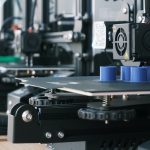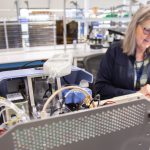Proven Methods for Collaborative Engineering
The modern production industry heavily relies on connected technologies to move projects forward. In fact, the entire global economy is highly dependent on remote collaboration, oftentimes across the globe. Manufacturing and production industries implement robust collaborative engineering capabilities into their processes to manage supply chain demands and streamline the development of products including medical devices and instruments.
Design teams, developers and engineers have incorporated collaborative engineering technology for many years to keep up with the evolving development processes and demands of the industry. When intercontinental collaboration is possible, engineers can achieve a higher level of efficiency and quality in their products. The methods for collaborative engineering help streamline medical device development and can maximize the time and effort on a project, delivering a more exact and refined device for patient, doctor and provider use.
Computer-Aided Design
Computer-Aided Design (CAD) is one of the most common methods for collaborative engineering today. The software enables remote and collaborative design across the globe. CAD software has become an essential component of the medical device development process, where designers and developers can access the technology from anywhere in the world. This is especially relevant in a more remote-based work environment, but even prior to the effects of the COVID-19 pandemic, CAD software was used prominently across industries, including the medical device development industry.
The benefits of using CAD software for collaborative engineering are extensive. Users are able to begin and edit projects more quickly, efficiently and clearly than traditional methods. In addition, designers can share files remotely, which enables collaboration across platforms, computers and physical locations. Medical device development benefits from CAD software thanks to its robust capabilities, including the ability to create 3D renderings, refined measurements and specs that are accurate to the final product.
CAD outputs as electronic files and code that is able to be sent to engineers and manufacturers for future development. Engineers can take CAD files for computer-aided engineering, whereas later in the collaborative engineering process, manufacturers rely on CAD files for laser cutting and 3D printing.
Computer-Aided Engineering
Computer-Aided Engineering (CAE) streamlines the device development process for engineers, enabling them to create virtual renderings of a product or a part of a product. CAE is a vital part of the collaborative engineering process, acting similarly to a virtual prototype of sorts. Engineers use CAE to simulate medical device performance, including movement and design.
Through this method of collaborative engineering, developers and engineers can optimize various iterations of a design and improve what will become the final product. Computer-Aided Engineering also assists in resolving engineering conflicts remotely, allowing users to collaborate on a design simultaneously and simulate how a product will look and act during final production.
Engineers are able to leverage CAE to test and resolve processing steps during device iteration, including:
- Stress and dynamics
- Kinematics
- Mechanical event simulation
- Optimization of final product, similar to beta testing
- Simulation of final manufacturing process including casting, laser cutting and printing
By leveraging CAE as a method of collaborative engineering, developers and engineers can work to resolve potential conflict and simulate medical devices across continents while speaking the same coding and engineering language.
Computer-Aided Manufacturing
One of the most robust and groundbreaking methods for collaborative engineering comes in the form of Computer-Aided Manufacturing (CAM). Through the use of computer systems and programs, manufacturers across different platforms can interact with a unified interface to output a physical product, oftentimes given from a CAD or CAE file. Machinists use CAM technology to create a device through numerical control and a coding language known as G-Code. The process of using Computer-Aided Manufacturing is repeatable and exact, making it instrumental in the collaborative engineering process.
The outputs of a CAM process vary based on the project and specifications of the device. Typically, a CNC or metal cutout is done through CAM code. As technology and collaborative engineering methods evolve, different outputs have become available, including 3D printing and more. The entire collaborative engineering process relies on Computer-Aided Design and Computer-Aided Engineering to finally output a final product or prototype through Computer-Aided Manufacturing. At this point in the device development process, the project has gone through many iterations and optimization processes, resulting in a near-final product ready for beta testing or final manufacturing on a large scale.
Collaboration and Innovation: Enabled
As the methods for collaborative engineering evolve, so too does the medical device development process. Technology such as CAD, CAE and CAM enable intercontinental collaboration to streamline development and get high-quality products to market quickly and efficiently.
Collaborative engineering enables designers, engineers and manufacturers to navigate supply chain demands by diversifying and outsourcing different specialities and capabilities to others who are set up to handle different aspects of the development process. With global collaboration and resources at an organization’s fingertips, medical device manufacturing is made more efficient and with a higher quality finish.
At Nextern, we have refined the collaborative engineering process through a global diversification of resources and capabilities. With device development facilities in the United States, Costa Rica, China and Vietnam, we are set up to manage the medical device development process at all stages to ensure your project gets to market quickly and efficiently, at the highest quality possible.
If you want to learn more about how our collaborative engineering team works to achieve your goals, contact us. We are ready to help you design, develop and manufacture your device concept into a leading product for patient, doctor and provider use.







